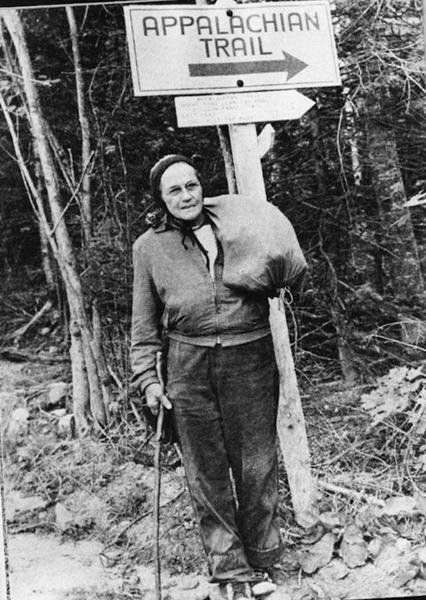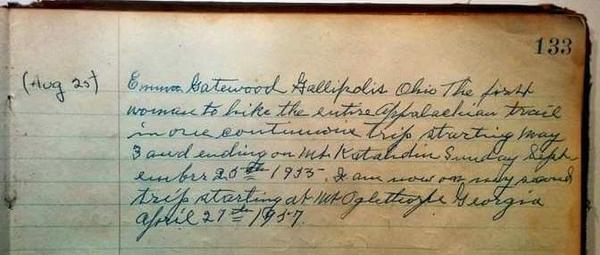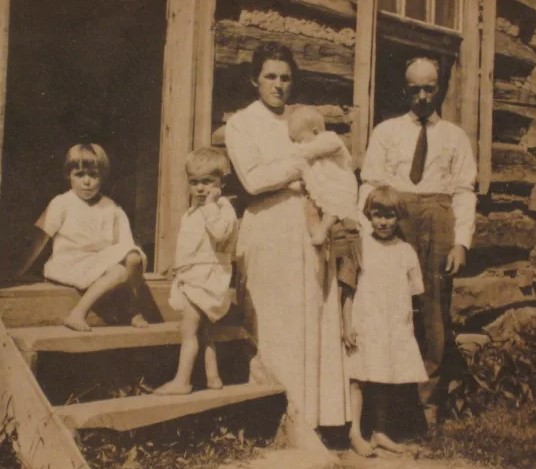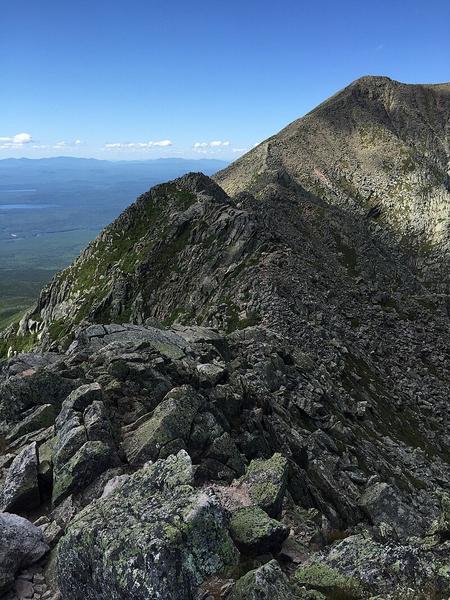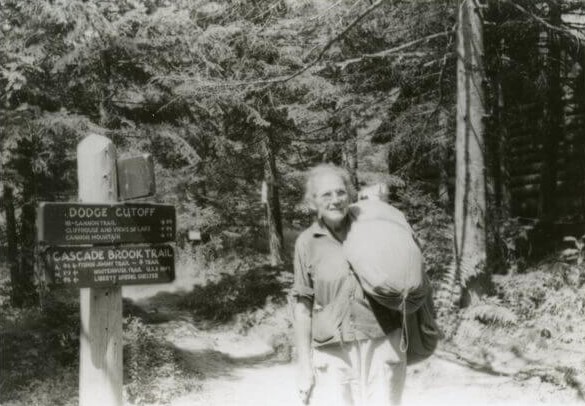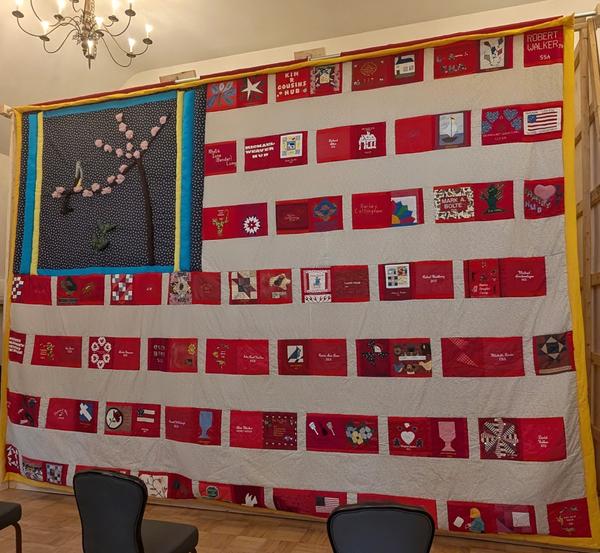October 31, 2025 Hello , These days, when women reach retirement age, some discover they must keep working to make ends meet. Others leave their jobs and take off in new and exciting directions. Whether we follow the beaten path or bushwhack their own, Emma Gatewood's story has enough grit to inspire us all. At age 67, this Ohio woman became the first female to hike the entire Appalachian Trail in one season all by herself. It was 1955, a time when men dominated the sport. Two years later Emma returned to the 2,190-mile footpath from Georgia to Maine and became the first person to finish it twice. At age 77, she
hiked it a third time, taking it in pieces, the first person, man or women, to hike the longest hiking-only footpath in the world three times. Before Emma ever set foot on the trail, she'd already raised eleven children and overcome a marriage that almost killed her.
❤️🔥 Courage Arises in Our Darkest Times
Emma actually failed the first time she tried to hike the famous footpath. She started at the northern end in Maine. “I got lost right off the bat,” she said. Looking for water, Emma took a side trail to a lake, where she decided to bathe. When leaving the water, she stepped on her glasses and broke them. She taped them together, but couldn’t find her way to the main track. She set signal fires hoping for rescue,
but with no food and plagued by black flies, she realized she had to walk out on her own. After three days and two nights, she came upon four park rangers looking for her. They said, "Go home, Grandma."
Emma Rowena Gatewood (née Caldwell) better known as Grandma Gatewood. Two years later, the grandmother and great-grandmother determined to give the trail another try. Worried her grown children would try to stop her, she simply told
them, “[I'm] going for a hike in the woods." She did not give the Maine park rangers a chance to stop her
either, heading to Georgia to start her hike at the other end. One of her daughters said later Emma's attitude was, “If those men can do it, I can do it.” Emma had always lived close to the bone. She could get along with the bare essentials, which she packed for the trip in a hand-sewn denim bag with a drawstring. She included a blanket, shower curtain, cup, canteen and bottle for water, a small pot, spoon, Swiss Army knife, first-aid kit, pins, flashlight, rope, raincoat, warm coat, change of clothes, and her Keds sneakers. She went through seven pairs of Keds by the end. Going without a sleeping bag, tent, compass or map, Emma stuck to the trail and relied on the kindness of strangers along the trail for food and shelter
Emma Gatewood signed the Carter Notch Hut logbook on her second A.T. trip in 1957. Emma usually started walking as the sun rose and didn't stop for the night until she was too tired to go on, averaging 14 miles a day. A Boy Scout troop reported they couldn't keep up
with her. She slept on the ground, sometimes picnic benches, and powered herself with simple food she could eat cold, including raisins, nuts, and chicken
bouillon cubes. She started May 3, 1955 and finished five months later, September 20th covering more than 2,000 miles. You might say Emma had already been trudging and
toiling for six decades before she set off on the longest hiking-only path in the world. Born in 1887 in Gallia County, Ohio, she worked on the family farm as a young child. At night, she and her 14 siblings shared just four beds in their log cabin. Her father, Hugh Caldwell, had been wounded in the Civil War and lost a leg. He drank and gambled, which didn't contribute to a secure childhood for Emma and her sisters and brothers. Emma married at 19, to a 26-year-old farmer Perry Clayton Gatewood. Her biographer Ben Montgomery wrote, “They were married three months before he drew blood.”
An early picture of Emma Gatewood with her husband and several of their children. We can assume Emma cooked and kept house. Her husband also assigned her to mix cement and build fences on the farm, all while carrying and raising eleven children. Emma's husband beat and sexually abused her regularly, several times nearly killing her. She often ran from him, disappearing into the woods. But she had no real escape for thirty years. To keep her under his control, her husband threatened to have her committed to an insane asylum. Then in 1939, one beating broke her teeth and cracked a rib. In fear for her life, Emma grabbed a sack of flour and heaved it at him. Law enforcement responded, arresting Emma instead of her
husband. She spent the night in jail, but the next day the mayor of the small West Virginia jurisdiction saw her bruised face and mercifully took her into his own home
for protection. This allowed her to get a divorce, which was extremely rare in 1940. Emma raised her three youngest children alone. Hiking the Appalachian Trail may
have appealed to Emma because during her marriage she had come to depend on the wilderness for respite and protection. Nearing the end of her first time thru-hiking the
trail, Emma faced a huge massif of granite at the northern terminus, the highest peak in Maine at 5,269 feet. The Penobscot Indigenous people named it Mount Katahdin, "Great Mountain." Facing this scenic, but intimidating summit on a cold, windy day, Emma may have called on the courage and perseverance she had practiced in her difficult childhood and violent marriage.
View west-southwest along Mount Katahdin's Knife Edge Trail towards South Peak from Chimney Peak in
Baxter State Park, Piscataquis County, Maine Emma was so close to finishing, just one day short of her goal, when she fell and broke her
glasses, bruised her face, and sprained her ankle. Five months on her feet had swollen them two sizes. But nothing would stop her. “It
took me a long time to get to the top,” she said. “When I signed my name in the register, I never felt so alone in my life.” After reaching the pinnacle,
Emma sang “America the Beautiful.”
Emma Gatewood at Lonesome Lake on her second A.T. trip in 1957. Photo by Peter Brandt, courtesy of AMC Library & Archives. Two years later, she took off again, this time "to enjoy" the hike. The
Appalachian Trail Museum succinctly spells out Emma Gatewood's contributions to the sport of hiking. “She inspired two distinct
movements in long distance hiking, women thru-hikers and the ultra-lite movement.” In 1959, Gatewood hiked new territory, trekking alone the 2,000
miles of the Oregon Trail, from Independence, Mo., to Portland. Small town and big city newspapers reported on Emma's exploits throughout her hiking years. Some tagged
her “America’s most celebrated pedestrian,” a pedestrian choice of words to describe Emma's resolve and courage as she forged a rare path with few, if any role models.
Know someone who needs a lift? Forward this email to remind them, our strength and courage arise in the darkest times.
A display of three quilts Michigan State University commemorates this 30th year since the bombing of the Alfred P. Murrah Federal Building in Oklahoma City
in 1995. Members of the American Federation of Government Employees created a twelve-by-fifteen-foot quilt in honor of the 89 federal workers murdered in the blast.
Three
quilts assembled in this exhibit relate to issues of community life, labor, and commemoration. A machine-applique quilt by Scottish-born artist Penny Sisto assembles portraits of the nineteen children, all under the age of six, murdered in the same attack.
A
sampler quilt sewn by women employee of the Works Progress Administration in 1936, reflects the history of federal investments in Oklahoman labor and the legacy of community-created quilts in the United States. The exhibit in the Lake Michigan Room of the MSU Union through Friday, October 31, 7pm.
Follow me on social media
This newsletter is a reader-supported publication. To support my work, consider becoming a paid subscriber.
Read
a great book? Have a burning question? Let me know. If you know someone who might enjoy my newsletter or books, please forward this e-mail. I will never spam you or sell your email address, you can unsubscribe anytime at the link below. To find out more about my books, how I help students, teachers, librarians and writers visit my website at www.MaryCronkFarrell.com. Contact me at MaryCronkFarrell@gmail.com. Click here to subscribe to this newsletter. |
|
|

